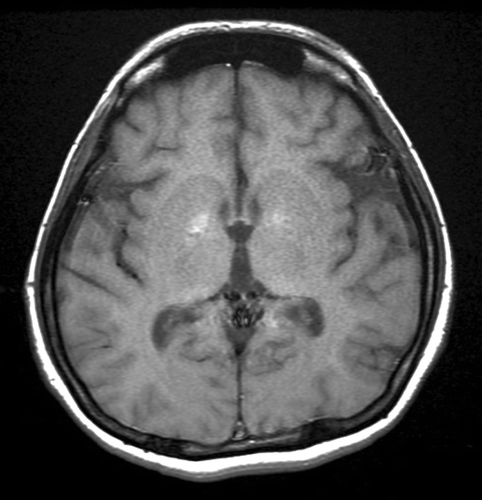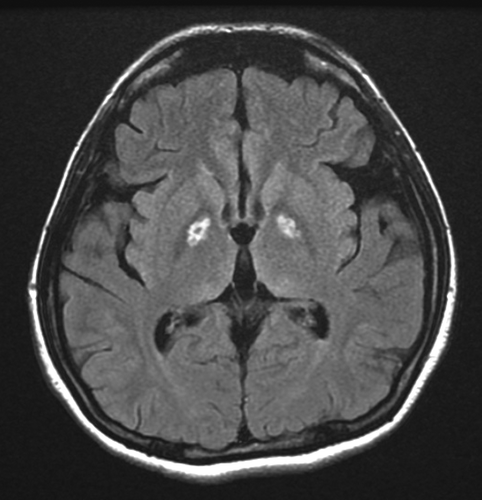Bilateral Pallidal Necrosis and Cardiac Toxicity in a Patient With Venlafaxine and Bupropion Overdose
To the Editor: The new generation of antidepressants is generally thought to be safer than traditional antidepressants. Although combining antidepressants is recommended for the treatment of refractory depression, the toxicity of drug overdose from more than one antidepressant is seldom addressed.
Case Report
A 30-year-old woman was sent to the emergency department 1 hour after ingesting venlafaxine and bupropion in a suicide attempt. The exact dose was uncertain, but according to the metabolites of venlafaxine, bupropion, and benzodiazepine found in her urine, it is probable that she consumed a 1-month prescription of 150 mg venlafaxine, 300 mg bupropion, and 3 mg lorazepam that was prescribed 3 days earlier.
She had clear consciousness initially, but generalized myoclonus soon occurred. A fever (40.6°C) and tachycardia (100–170 bpm) developed with normal blood pressure (122/91 mmHg), respiratory rate (16/min), and O2 saturation (SpO2=95%). An ECG demonstrated prolonged QRS complex with a deep, slurred S wave on lead I and an R wave on lead aVR. Sodium bicarbonate was then administrated.
One hour later, the patient became drowsy and confused and she suffered respiratory distress. Her blood pressure decreased (94/36 mmHg), tachycardia increased (200 bpm), and SpO2 decreased (49%). Endotracheal intubation was performed within 5 minutes, and her SpO2 and blood pressure returned to normal. After sodium bicarbonate treatment, the patient recovered from the changes seen on the ECG. However, leukocytosis (10.27×109/L), elevated creatine kinase (520 U/L) and creatinin (1.5 mg/dL) levels, and changes in vital signs suggested serotonin syndrome. Cyprohepadine was provided with supportive treatment; intravenous lorazepam was also given continuously for agitated behavior. Fever and disturbed consciousness ameliorated within 2 days, but creatine kinase and alanine transaminase levels continued to increase, peaking at 107,895 U/L and 2,453 U/L around 43 and 102 hours, respectively, after overdose. The patient was extubated 7 days later.
One week after extubation, purposeful involuntary movement and akathisia were noted after discontinuing lorazepam. Suspecting benzodiazepine withdrawal, lorazepam was resumed with pramipexole, 0.75mg/day, until the akathisia subsided 2 weeks later. The choreoathetosis remained, with frontal releasing signs (i.e., Luria test, glabellar reflex) and impaired recent memory, language, and executive function. An MRI scan revealed bilateral pallidal necrosis 7 weeks after admission (Figure 1 and Figure 2).


Discussion
A limited number of reports of antidepressant overdose-related bilateral pallidal necrosis have been published. Szólics et al. (1) reported similar pallidal necrosis with multiple functional changes and extrapyramidal symptoms after fluoxetine overdose, implying a complex relationship between serotonin and the nigrastriatal dopaminergic system. The bilateral pallidal necrosis in our patient could have been caused by transient hypoxia, but the toxicity of venlafaxine and/or bupropion could not be excluded. It is therefore worth being cautious when prescribing venlafaxine concomitantly with bupropion for patients at high risk of deliberate overdose. Furthermore, neuroimaging is recommended for patients with prolonged extrapyramidal symptoms and cognitive change after serotonin syndrome or antidepressant overdose.
1 : Neuroimaging findings in a case of fluoxetine overdose. J Neuroradiol (Epub ahead of print, Dec 22 2011)Google Scholar



